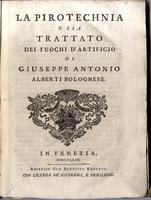Lastre di rame incise, mobili, per biglietto da visita commerciale o pubblicitario.
Torino, "Gaj fecit", s.d. (ante 1810)
114x165 mm, tre matrici in rame, mobili e concentriche, di cui due con incise la cornice ornata da volute e rami vegetali, e la terza recante la scritta "Louis Joseph Pagan, dans cette ville / Bijotteries, le tout à juste prix / Vis- à-vis de le Tabac, / au près de la Douane de Turin", nell'angolo inferiore della lastra: "Gaj fecit". La matrice più esterna è chiaramente una cornice ornata di ampio utilizzo, la seconda verso l'interno poteva essere intercambiata con altre che ospitassero stemmi nobiliari differenti o marchi commerciali, mentre la lastra più interna è riservata al nome ed indirizzo della attività di gioielleria . "Da principio il nome si scriveva entro semplici contorni formati da ghirlande di fiori o di foglie, in seguito s'arricchì di trofei... Le incisioni di tali biglietti erano sempre eseguite in rame e solo qualche rara volta in legno..." (cfr. Bertarelli Prior, p. 28). Gli spazi vuoti, in questa serie di lastre, erano probabilmente destinati all'aggiunta, a mano o a stampa, di ulteriori informazioni. Raro cimelio, di interesse per la grafica, la pubblicità e la gioielleria a Torino durante l'occupazione napoleonica.
ENGLISH:
114x165 mm, three copper masters, movable and concentric, two of which bearing the engraved frame decorated with volutes and vegetal branches, and the third with the inscription “Louis Joseph Pagan, dans cette ville / Bijotteries, le tout à juste prix / Vis- à-vis de le Tabac, / au près de la Douane de Turin”, in the lower corner of the plate: “Gaj fecit.” The outermost matrix is clearly an ornate frame of wide use, the second inward one could have been interchanged with others housing different noble coats of arms or trademarks, while the innermost matrix is reserved for the name and address of the jewelry business. “At first the name was written within simple frames shaped by garlands of flowers or leaves; later it was enriched with trophies... The etchings of such cards were always copper-engraved and only occasionally woodcut" (See: Bertarelli Prior, p. 28). The empty spaces, in this series of coppers, were probably intended for the addition, by hand or in print, of further information. Rare piece, relevant in terms of the history of printmaking, advertising and jewelry in Turin during the Napoleonic occupation.
Bertarelli - Prior, Il Biglietto da Visita, 1911, p. 28.



